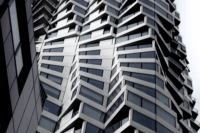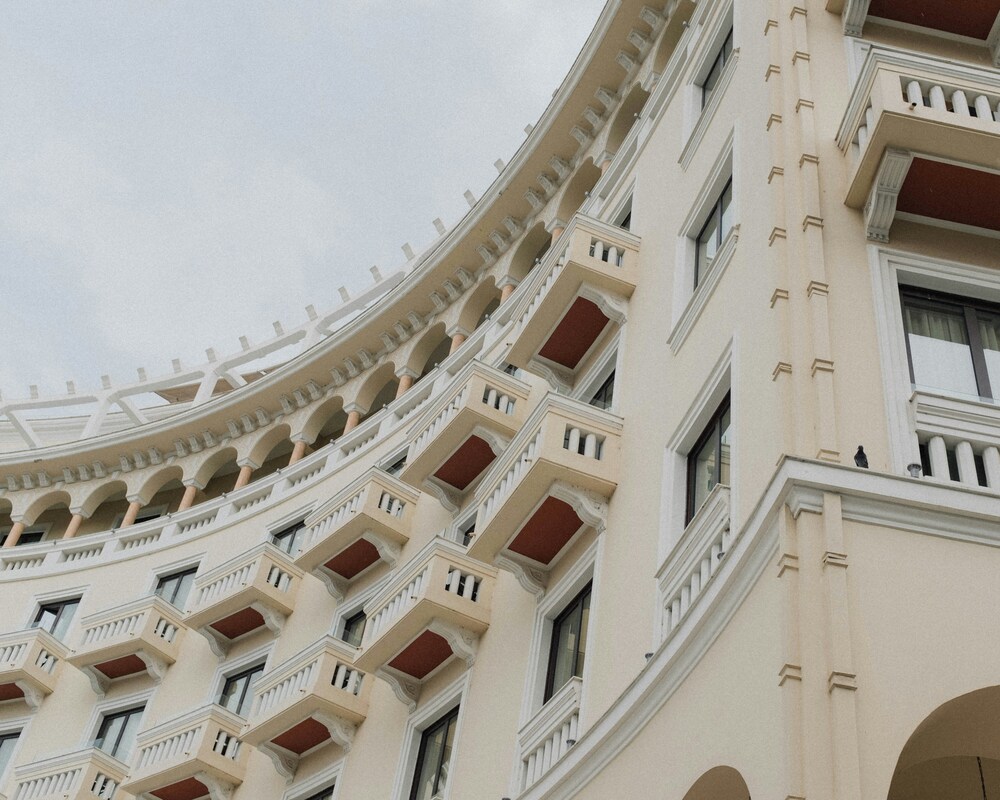- Home
- Articles
- Architectural Portfolio
- Architectral Presentation
- Inspirational Stories
- Architecture News
- Visualization
- BIM Industry
- Facade Design
- Parametric Design
- Career
- Landscape Architecture
- Construction
- Artificial Intelligence
- Sketching
- Design Softwares
- Diagrams
- Writing
- Architectural Tips
- Sustainability
- Courses
- Concept
- Technology
- History & Heritage
- Future of Architecture
- Guides & How-To
- Art & Culture
- Projects
- Interior Design
- Competitions
- Jobs
- Store
- Tools
- More
- Home
- Articles
- Architectural Portfolio
- Architectral Presentation
- Inspirational Stories
- Architecture News
- Visualization
- BIM Industry
- Facade Design
- Parametric Design
- Career
- Landscape Architecture
- Construction
- Artificial Intelligence
- Sketching
- Design Softwares
- Diagrams
- Writing
- Architectural Tips
- Sustainability
- Courses
- Concept
- Technology
- History & Heritage
- Future of Architecture
- Guides & How-To
- Art & Culture
- Projects
- Interior Design
- Competitions
- Jobs
- Store
- Tools
- More
Nomadic Architecture and Designing Spaces for People Who Are Always Moving

Nomadic architecture designs flexible, mobile living spaces for people who move frequently. It offers portability and adaptability. People who live on the go need homes that can change with them. This architecture focuses on creating spaces that are easy to transport, set up, and take down. Designing spaces for people who are always moving addresses the growing need for flexibility. It provides practical, sustainable, and eco-friendly solutions for modern mobile lifestyles. As more people embrace constant movement, the demand for these designs increases. They offer comfort and function without sacrificing mobility. The ability to adjust living spaces easily is more relevant than ever in today’s fast-paced society.
Table of Contents
ToggleThe Rise of Digital Nomadism: How Architecture Can Support Remote Work
Mobile living has drastically changed how people approach work, especially for digital nomads and remote workers. A dedicated workspace in mobile environments is now a necessity for maintaining productivity. Many portable homes and mobile spaces incorporate flexible workstations, ergonomic furniture, and quiet areas to create a comfortable, efficient environment. These spaces are designed to accommodate the tools and technology needed for remote work while ensuring comfort during long work hours.
In cities like San Francisco, known for being a hub for digital nomads, architects focus on creating spaces that support both living and working needs. With many homes now featuring integrated office spaces that maximize productivity without sacrificing comfort, California has changed a lot in terms of its approach to remote workspaces. Work-friendly designs in portable homes incorporate features such as foldable desks, wall-mounted storage, and ample natural light to foster a productive atmosphere. As mobile living continues to grow, adapting spaces to support remote work will remain an important part of design for those always on the move.

Caption: Since a lot of people nowadays are working from their homes, the design changes to make the working space more comfortable
Understanding the Needs of the Nomadic Lifestyle
People who move constantly, like travelers and remote workers, need spaces that are adaptable and efficient. These individuals require homes that can adjust to different locations and changing circumstances. A typical living environment for them needs to offer portability and flexibility to suit both work and relaxation. Modular design is essential here because it allows easy reconfiguration of the space, making it functional for various needs, whether it’s for a meeting or a quiet night in. Multi-functional elements, such as foldable furniture and mobile storage solutions, play a significant role in maximizing space and improving the overall efficiency of the living area.
In places like Miami, Florida, minimalist designs are often used to create flexible, compact homes. These homes are specifically tailored for nomads, providing a practical and adaptable living space that is easy to transport and set up in different environments. Despite their compact size, these homes do not compromise on comfort, quality, or functionality. This allows nomads to enjoy both freedom and a home-like atmosphere wherever they go.
Designing Spaces for People Who Are Always Moving: Modular and Flexible Architecture
Modular architecture has become a game changer for those who lead a mobile lifestyle. The main appeal of this design lies in its ability to be flexible, efficient, and easily adaptable to various needs. Lightweight materials and easy-to-assemble structures allow for quick setup and relocation, making them perfect for people who are always on the move. Modular homes can be customized to fit specific purposes, whether it’s a small home, an office space, or a combination of both.
Sustainability is also a significant factor in modular design, with many builders opting for eco-friendly materials that reduce environmental impact. These materials are durable and easy to transport, making them ideal for mobile living. In Portland, Oregon, the demand for innovative modular housing solutions continues to grow. The city is known for its commitment to sustainable living, and modular housing plays a large part in this. The designs cater to those seeking flexible, affordable, and environmentally-conscious spaces that fit their ever-changing lifestyles. Modular homes offer the freedom to move while maintaining comfort and functionality.

Caption: Modular architecture is perfect for people who move constantly because of its efficiency and flexibility
Design Considerations: What Makes a Space Truly Mobile?
In New York City, innovative solutions for small, mobile living are changing how people use space. For those who move frequently, the design of their living space must prioritize efficiency and adaptability. Lightweight, durable materials are crucial for creating homes that are easy to transport while still standing up to daily use. These materials ensure that structures remain functional in different climates and environments, from urban apartments to rural retreats.
Technology also plays an important role in enhancing the adaptability of mobile spaces because smart systems can control everything from lighting to temperature. Efficient layouts are another consideration, as spaces need to accommodate diverse needs in different settings. A small, well-designed space should work just as well in a crowded city as it does in a remote area.
Sustainable Design for the Modern Nomad
Sustainable design has become a priority in designing spaces for people who are always moving. Energy-efficient materials, such as insulated panels and recycled wood, help reduce energy consumption while improving comfort. Solar power systems are often integrated into mobile homes, offering an independent and eco-friendly energy source. Rainwater collection systems provide an alternative water source, reducing reliance on local infrastructure. In addition, eco-friendly designs are increasingly used to lower the environmental impact of mobile living.
Communities like Boulder, Colorado, are leading the way in embracing sustainable, mobile living. Boulder’s eco-conscious residents and architects prioritize energy-efficient, green designs, with many homes featuring solar panels, composting toilets, and rainwater collection systems. The city supports the idea of mobile, sustainable living by providing resources and spaces for nomads to thrive. The eco-friendly approach here isn’t just about reducing carbon footprints but also promoting a lifestyle that reduces dependence on local resources.

Caption: Solar panels and other sustainable methods are common options for designing spaces for people who are always moving
Adapting to Different Environments
In Alaska’s harsh environment, nomadic architecture must adapt to extreme weather conditions. Designers build structures to withstand freezing temperatures, heavy snow, and strong winds. Insulation materials help retain heat while remaining lightweight for easy mobility. In desert regions, architecture keeps spaces cool using reflective materials and natural ventilation. Coastal areas require buildings with moisture-resistant features, corrosion-resistant materials, and elevated foundations to prevent flooding.
Nomadic homes use renewable energy sources like wind turbines, solar panels, and geothermal systems tailored to the location. In Alaska, for example, solar panels generate power during the long winters, while wind energy provides a solution in coastal regions. These energy sources support sustainable living and reduce dependence on external resources. Nomadic architecture offers the flexibility to adapt to various terrains, providing safe, comfortable, and environmentally friendly homes.
Conclusion
In conclusion, designing spaces for people who are always moving requires flexibility, sustainability, and adaptability. Modular architecture, eco-friendly materials, and energy-efficient solutions create homes that cater to ever-changing environments. By focusing on portability and functionality, these designs offer nomads the freedom to live comfortably in diverse locations while maintaining mobility. Such spaces redefine modern living for those on the go.
Meta Description: Discover designing spaces for people who are always moving, with flexible, sustainable architecture tailored for mobile lifestyles.
Focus Keyphrase: Designing Spaces for People Who Are Always Moving
illustrarch is your daily dose of architecture. Leading community designed for all lovers of illustration and #drawing.
Submit your architectural projects
Follow these steps for submission your project. Submission FormLatest Posts
Top 8 Luxury Vacation Rentals Features Guests Love Most
A luxury vacation rental offers an entirely different experience than a typical...
Why Local Expertise Matters: Choosing the Right Plumbers in Townsville
Why Local Expertise Matters: Choosing the Right Plumbers in Townsville When it...
Bathroom Remodel ROI: How to Add $15–30K to Your Home Value in 2025-2026
Outdated bathrooms can drag a listing 20-30% longer on the market. Buyers...
The Key Factors to Review When Comparing Fiber Providers in Minneapolis
Looking for a fiber provider in Minneapolis can feel surprisingly overwhelming. The...












Leave a comment